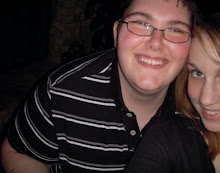When we consider the issue of mass, concentrated poverty like that seen in the South Side of Chicago, the complexity is almost paralyzing. Any reasonable solution to the problem of violence and unemployment must pull from economics, reformed urban planning, sociology, psychology, and sincere education reform, among many disciplines. That may go without saying, but it becomes significant when one realizes that American society has bred a culture of individuals largely unwilling to learn about situations other than their own. Additionally, Americans lack the attention span needed to fully realize the complexity of this problem, hindering any real, long-term, solution oriented dialogue.
An issue central to this discussion is the fact that many African-Americans living on the South Side feel entirely removed from it. Throughout the book, Our America- a documentation of the lives of two teenage boys growing up on the South Side of Chicago in the 1990's- it’s hard to ignore the number of instances where people sincerely attempt to use the boys, LeAlan and Lloyd’s , work as a means to communicate their message to the public. One of the more interesting example of this is when Lloyd describes how his father, Chill, came into the house, took his tape recorder, and began speaking about his struggle with alcoholism and his intentions to raise Lloyd to the best of his ability.
Regardless of the perceptions of the wider public, many of these individuals feel they aren’t truly understood; at least not enough to create a proper response to their situation. Toward the end of Our America, Lloyd writes that, “And now most of us are just doing what society wants us to do—contributing to the jail population, selling drugs, having babies, living on welfare” (171). Society as created its own mythos about the ghetto to replace a legitimate understanding of it, and have placed negative expectations on those who live there. Also, the language of that passage triggers a feeling of animosity towards larger society for their ignorance. The people who could be working to improve life for those living in the projects have actually contributed to the barriers preventing assistance.
In a Washington Post article, Susan Jacoby summarizes key arguments in her new book, The Age of American Unreason, and provides some insight into contemporary American culture that can be applied to an analysis of our treatment of violence and concentrated poverty. Jacoby describes how:
People accustomed to hearing their president explain complicated policy choices by snapping "I'm the decider" may find it almost impossible to imagine the pains that Franklin D. Roosevelt took, in the grim months after Pearl Harbor, to explain why U.S. armed forces were suffering one defeat after another in the Pacific. In February 1942, Roosevelt urged Americans to spread out a map during his radio "fireside chat" so that they might better understand the geography of battle. In stores throughout the country, maps sold out; about 80 percent of American adults tuned in to hear the president. FDR had told his speechwriters that he was certain that if Americans understood the immensity of the distances over which supplies had to travel to the armed forces, "they can take any kind of bad news right on the chin."
This provides an incredible contrast to our contemporary approach to complicated issues. As opposed to digging into them and striving for a better understanding of one of the most tragic situations in our country, our attention span continues to decrease. Jacoby also cites information from two Harvard University studies which found that between 1968 and 1988, the average sound bite of presidential candidates on the news dropped from 42.3 seconds to 9.8 seconds. By 2000, sound bites had decreased to an average of 7.8 seconds. There are interesting theories into the reasons behind this phenomenon, but the more important point is that just as the situation in the South Side was gradually worsening, American’s attention span was decreasing at a similar pace.
So, how can we pull from a large handful of different disciplines to offer preventative tools and solutions for the disastrous conditions on the South Side of Chicago when the majority of the population is unwilling or possibly incapable of understanding the complexity of the issue? Anyone with any sense knows the solution to these problems will never fit into an 8 second sound bite.
Subscribe to:
Post Comments (Atom)

2 comments:
Nice site Sarah...I agree with the sense of apathy that's developing, but do you really think that urban planning will be able to fix this problem? Might it perhaps be a deeper issue with the way our society is structured? I'm actually quite surprised that you feel that this is problem that "we" need to solve given the free-market type of person I took you to be..am I missing something?
Good stuff. I think your post indirectly identifies the cause of the problem -- State intervention. Though some folks acting with good intentions may believe they are helping those less-fortunate, the unintended consequences associated with their "solutions" often lengthen and deepen the very problem they're attempting to address.
As Towson economist Howie Baetjer has noted, these folks basically have the bottom three rungs of the ladder removed by the war on drugs, government schools, and minimum wage laws. What is needed is less (and I would argue no) State planning and paternalism.
(BTW: you're missing an "s" in the word "example" in the second para and an "h" in "has" in the 3rd.)
Post a Comment